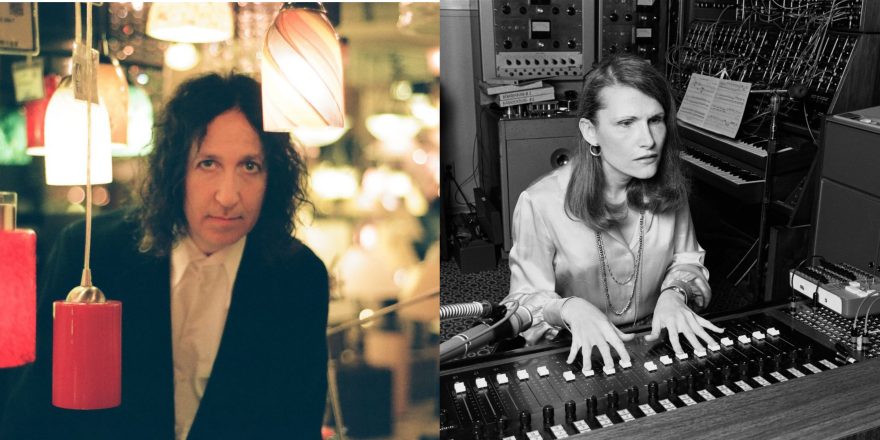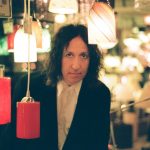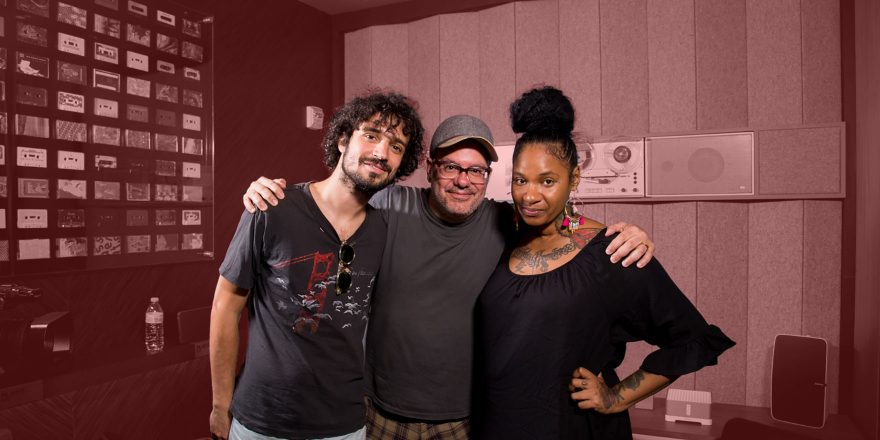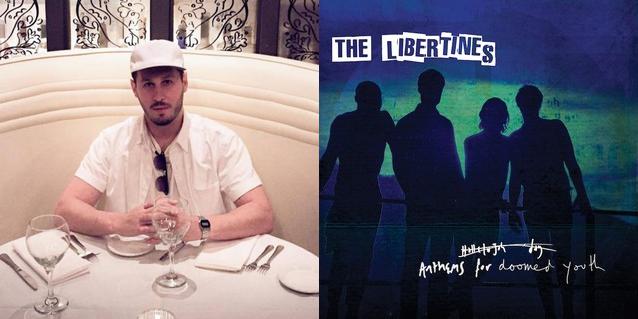The opening scene in Stanley Kubrick’s masterfully styled, highly controversial film, A Clockwork Orange, confronts us with main character Alex DeLarge’s face full-on featuring a single frond of fake eyelashes. The camera pulls back revealing his three droogs (gang-member friends) dressed in white, seated in future-psychedelic splendor at the Korova Milkbar. This flash gains rocket propulsion via foreboding classical music — Purcell’s “Funeral Music for Queen Mary” written in 1695 — performed by Wendy Carlos entirely on Moog Synthesizers.
I was 17 years old when I experienced this mind-boggling film, and first heard the startling sounds of Wendy Carlos. Having already centered my life on mind-expanding music with my record collection, and through my involvement as a musician in my own bands, I was ever-thirsty for fresh innovation within rock & roll. Later in the film, Beethoven’s glorious “Ninth Symphony” is heard featuring a choir singing in German — but, again, it was all done by Wendy on her mysterious Modular Moog. Upon realizing this, my mind was essentially blown, and instantly I knew that synthesizers were going to be my life’s language from that point on.
Three months later, I bought my first monophonic analog synth, an ARP Odyssey, and an ARP String Ensemble (a plastic electronic orchestra thing). With those two machines and a Roland Jet Phaser for special effects, I had my keys in the ignition. I was a dreadful physics student, my math skills were terrible, and I (still have) never really figured out how electricity works. I intended to apply hope, creative intuition, and sheer willpower to make these two electronic instruments create the sounds of waking dreams and transport me into my own science future!
I hate to report, but it was actually very slow-going at first. For the first year, I slowly produced dry, wimpy, thin, and non-compelling sounds from that ARP Odyssey synth using its 34 colorful sliders and 22 small black switches. My own band members rarely smiled during my performances, shall we say? Then, I had a sudden breakthrough, though this part may sound far-fetched: One night, during a personal LSD trip in a small hotel room as my band members (in The Sorcerer’s Apprentice) slept after a concert, I had my headphones on tweaking the ARP Odyssey. In the dark, flecked with internal fast-flashing spots of color, the damn thing started talking to me. I kid you not! At first, it was a sound somewhere between wind blowing and birds chirping, but as I raised the pink LFO frequency slider, that wind started fluttering more like a helicopter. Out of this wavering sound emerged a friendly, comforting voice with definite words of instruction: “Hello, Gordon, I am your ARP Odyssey and I am going to tell you the secrets of how I work.”
Many things happened that night, including me carrying my synthesizer back onto the college gymnasium stage where we had just performed four hours earlier, turning on the sound system and writing my first song. In a delirious haze of hallucinatory joy, I rushed back to our hotel room to wake (at 4 AM) my bandmates to show them my new discoveries. Only Griff Stevens, our fabulous lead singer, actually got out of bed and humored me by following me into the gym to see what mischief I had been up to. The others grimaced and yelled at me to get the fuck out and leave them to sleep in peace.
From that moment on, I truly possessed a magical touch with synthesizers, echoes, phase shifters and drum machines. These things became part of my intuition, like an extra body part or an extension of my own imagination. After that, my entire 1980s and ‘90s were spent blissfully exploring sounds, recording, and writing my own songs.
Flash forward to 1996. Living in Seattle during the grunge revolution was phenomenally good for me, as I was signed to a record and publishing deal with our tribal space-rock band, Sky Cries Mary. This meant, among other victories, that we were able to tour all over the USA, and I began collecting old keyboards and recording equipment in many cities along the way. I had all the time in the world to work on my own sonic inventions, and then took a small holiday trip to New York City.
I was lucky to stay in Manhattan with Tom O’Horgan, the brilliant director of the Broadway versions of Hair and Jesus Christ Superstar, along with an important part of underground theater troupe La MaMa. During our first conversation, Tom told me that one of his friends from the neighborhood was also a synthesizer player, and her name was… Wendy Carlos. My jaw dropped open. I asked him — even though we’d only met 30 minutes earlier! — “Um, could you possibly introduce me to this friend of yours?”
The next night, Tom took me to a Caribbean restaurant on E 14th Street to have dinner with Wendy. My excitement was stratospheric, and my mind flooded with questions for her: How did you make your Moog sing the choral parts in German? What was it like when you recorded Switched on Bach and almost single-handedly introduced the world to electronic music? What have you been working on lately?
After dinner, Tom and I were invited back to Wendy’s studio where the adventure continued. There, to my utter amazement, was the old Moog Modular system she had used on her early recordings. This venerable instrument, made in collaboration with Dr. Bob Moog himself, was decorated with long bright peacock feathers. There were four massive hand-built speakers hanging in a surround-sound array over our heads, along with other pieces of musical equipment she had created. Two of the most interesting things I saw were her custom mixing console and incredible looking circular Theremin, designed with a round, irregular keyboard pattern on it and a dial to follow precise musical intervals from this wild instrument.
Wendy played us some excerpts from her latest album, Switched on Bach 2000, which was truly another revelation, as one would expect from this unique sound designer and musician. I was already familiar with the music of Johann Sebastian Bach, but these pieces sounded alien to me, as if they were being beamed in from a new dimension. I asked Wendy what was going on with these recordings, other than the surround-sound process that she had already described. She told me that she had programmed her keyboards to the original tuning system that Bach himself would have used when composing. This is very different sounding to how we (in Western music) tune our instruments, and in many ways is much smoother — the actual intervals between the keys on the keyboard were different. The result was wider, more curved, and even warped during certain passages. It was a marvelous listening session, which cast extra magic upon the evening I first met Wendy Carlos.
I learned that she enjoyed working in the night hours when the city was quiet. She also explained that her dedication to her practice was such that she wouldn’t use anything that she couldn’t actually play with her own two hands (and for organ music with bass pedals, feet as well). Automated sequences or passages that were more complex and faster than she could play were not making it onto her records. Admirable and rare, indeed!
Over the years, I’ve been fortunate to have more chances to visit Wendy. One of her projects was creating a digitally-sampled orchestra, which was intended to be as lifelike as possible. She studied the variation of overtone series created by orchestra instruments when they are played both quietly and loudly, and then programmed her violins, cellos, woodwinds, and horns with this information so that they would behave naturally. The album that resulted from that was called Tales of Heaven and Hell, released in 1998.
Imagine how happy I was when Wendy came to Limelight NYC to see Sky Cries Mary play — she said that we were great, but the live sound at Limelight was terrible. Being a giant old cathedral, I can imagine how washy the sound must have been that night!
Wendy Carlos forged new ways to create sounds and has incorporated her discoveries into powerful, expressive music. Her work has been a lifelong inspiration, and has motivated me to always look for new methods of production, new worlds of sound. As a teenager listening to the stunning soundtrack to A Clockwork Orange, I never dreamt that I would one day meet this artist who so expanded my mind and shaped my concept of what music could be.
Gordon’s new book The World Is Going to Love This is out now.
(Photo Credit: Kelly Gordon & Ruby James)







